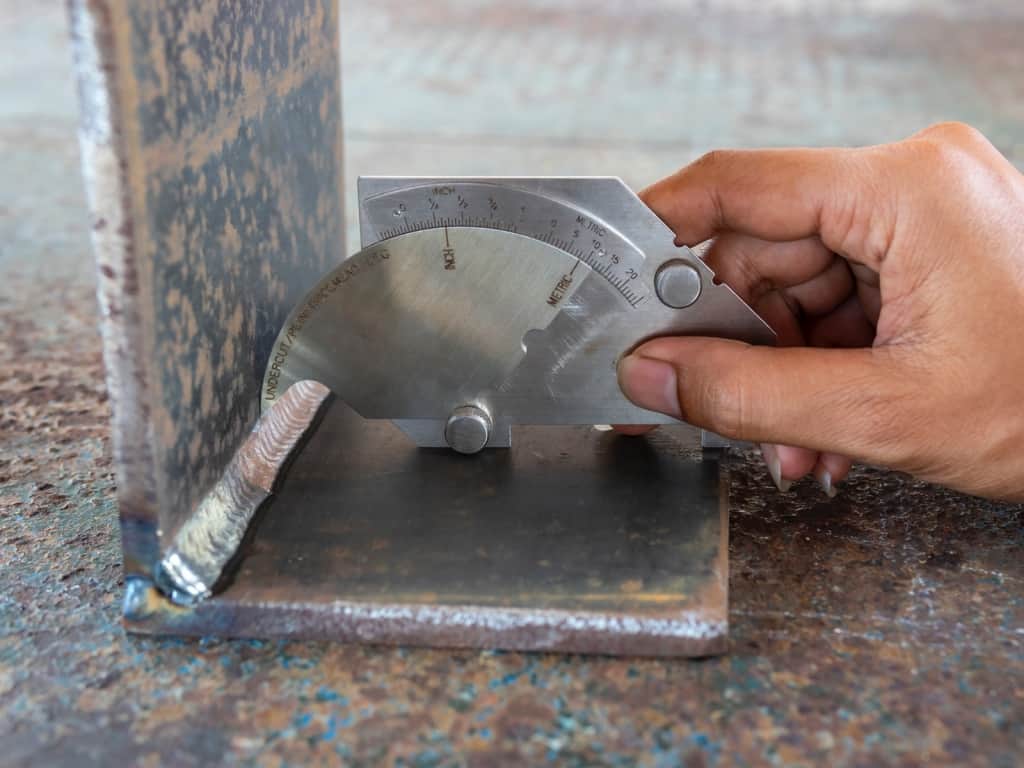Preventing Weld Undercut: Proven Approaches Every Welder Need To Know
Preventing Weld Undercut: Proven Approaches Every Welder Need To Know
Blog Article
Crucial Tips for Welders: Stopping Undercut Welding and Ensuring Stronger Weld Joints
In the world of welding, accomplishing strong and resilient weld joints is the cornerstone of generating high-grade work. One common challenge that welders frequently run into is undercut welding, which can compromise the integrity of the weld joint.

Recognizing Undercut Welding
Undercut welding is a common welding flaw that takes place when the weld steel fails to effectively load the groove and leads to a groove-like anxiety along the weld grain. This problem damages the weld joint, making it vulnerable to fracturing and failure under stress and anxiety. Undercutting can be triggered by different variables, including extreme welding existing, high welding speed, incorrect electrode angle, wrong electrode size, and inadequate welding technique.
One of the primary factors for undercut welding is an imbalance in between the welding existing and the welding speed. If the welding current is too expensive or the welding rate is too fast, the weld metal might not adequately fill up the groove, leading to undercutting. Furthermore, making use of an electrode that is too large can lead to a comparable outcome, as the excess metal can not appropriately move right into the groove.
To avoid undercut welding, welders ought to ensure they are using the appropriate welding criteria, maintain an appropriate electrode angle, choose the appropriate electrode size, and method correct welding strategies. By addressing these elements, welders can reduce the danger of damaging and produce more powerful, extra reputable weld joints.
Appropriate Welding Method
Effective welding technique plays an essential role in making certain the top quality and stability of weld joints. One fundamental facet of appropriate welding technique is maintaining the proper angle and distance between the welding weapon and the workpiece.
Additionally, a consistent and consistent hand activity is necessary for creating solid and long lasting weld joints. Welders must aim for smooth, consistent movements to make certain even circulation of the weld product. Proper adjustment of the welding gun and filler product is also vital to achieving optimum penetration and blend.
Moreover, controlling the warm input and picking the proper welding parameters based on the product being welded are essential consider achieving top notch welds - Preventing weld undercut. Welders ought to comply with the recommended settings given by welding treatment specifications and change them as required based upon the particular demands of the project. By grasping correct welding methods, welders can significantly improve the toughness and reliability of their weld joints
Selecting the Right Electrode
Keeping the correct angle and range in between the welding gun and the workpiece is essential when taking into consideration the importance of selecting the ideal electrode in welding applications. The selection of electrode plays an important function in determining the quality and strength of the weld joint. Electrodes come in various types, each created for details objectives and materials.
Firstly, choosing the appropriate electrode diameter is necessary. Thinner electrodes are ideal for welding slim products, while thicker electrodes are much better for thicker materials and higher warm applications. Matching the electrode size to the density of the work surface assists accomplish a balanced weld.
Second of all, recognizing the product make-up of the electrode is essential. Various electrodes are made my sources for welding details products like steel, stainless-steel, light weight aluminum, or cast iron. Making use of the proper electrode product makes sure great combination and reduces the risk of defects in the weld.
Finally, thinking about the welding setting and technique is essential when choosing the electrode kind. As an example, certain electrodes are better matched for overhead or upright welding placements, while others work well for flat or horizontal placements. Picking the best electrode based on the welding strategy enhances the overall weld top quality and stability.
Preparing the Base Steel
To guarantee an effective welding process, what preliminary actions should be taken when preparing the base metal for welding? Furthermore, any kind of existing weld material or residue from previous welding need to be removed to make sure a tidy surface area for the new weld.

Carrying Out Post-Weld Inspections

After performing these analyses, welders have to contrast the outcomes versus market requirements and project requirements to ensure that the weld joint meets all essential standards. Any kind of inconsistencies or insufficiencies discovered throughout the post-weld examination must be immediately dealt with through appropriate rehabilitative procedures to ensure the weld's integrity. By faithfully executing post-weld assessments and quickly addressing any kind of problems, click to read more welders can support the quality and integrity of their work, ultimately adding to the security and longevity of the bonded structures.
Verdict

To conclude, preventing undercut welding and making certain stronger weld joints call for a mix of proper welding strategy, choosing the appropriate electrode, preparing the anchor base metal correctly, and carrying out post-weld inspections. By recognizing the sources of undercut welding and applying the required precautions, welders can create premium weld joints that fulfill market criteria and ensure the architectural integrity of the welded parts.
Undercut welding is a typical welding issue that happens when the weld steel fails to effectively fill the groove and results in a groove-like anxiety along the weld grain (Preventing weld undercut). Damaging can be caused by numerous factors, including too much welding existing, high welding rate, inappropriate electrode angle, inaccurate electrode dimension, and inadequate welding technique
One of the primary factors for undercut welding is an imbalance between the welding present and the welding rate. If the welding current is also high or the welding rate is too quick, the weld steel might not sufficiently load the groove, leading to damaging.Maintaining the correct angle and distance between the welding gun and the work surface is basic when taking into consideration the importance of choosing the best electrode in welding applications.
Report this page